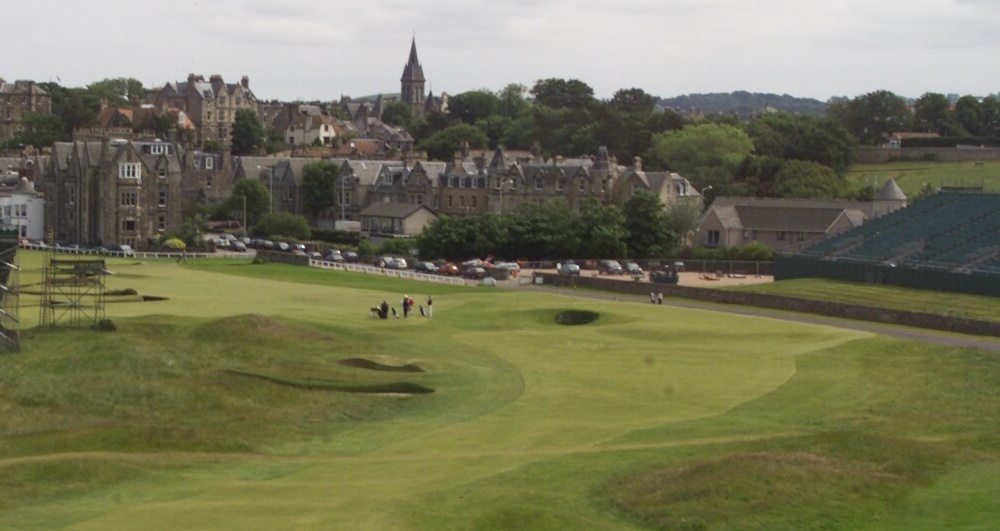The 26 yards added to the Old Course by way of the controversial new tee at the Road Hole 17th will be the last change made to the most historic venue in golf before attention turns to reining in playing equipment.
At an Open media day during the week, R&A chief executive Peter Dawson again defended the decision to stretch the most famous single hole in golf for the first time in over a century as necessary “to restore the traditional challenge of the hole.”
The new tee for the 17th encroaches on the practice ground and adds 45 yards to the hole.
With a recalibration of the length to the seventh hole, showing it was actually playing shorter than previously calculated, the total yardage of the Old Course will reach 7305 yards for the 150th anniversary Open in July.
Dawson had made the commitment not to change the Old Course again before the last changes were enacted for the 2005 Open, but he said that the experience of watching professionals play the course regularly had changed their minds.
“We have the benefit not only of seeing the Open every five years but the top professionals playing at the Alfred Dunhill Links Championship each year, and it had become apparent that the traditional challenge of the hole had diminished somewhat,” he said.
“Players were taking shorter iron clubs into the green, a seven iron or less, and with greater ball control the Road Hole bunker had become less of a factor and we were seeing fewer and fewer balls on the road itself behind the green.
“The new tee should require players to take longer irons into the green and what is clearly a very challenging hole should become even more so.”
The equally controversial rough on the left of the 17th fairway will be trimmed back five to six yards to give more of a bail-out area for the players.
The R&A didn’t anticipate having to make more changes as driving distances had “plateaued” since they and fellow governing body the USGA had made a joint statement on equipment in 2002, he continued.
“We have the figures from both main tours and have analysed them to determine when the driver is used and they still show this plateau,” he said.
The R&A had consulted with players about the changes, but Dawson did not expect the response to be unanimously positive and he accepted that the tee at present had an odd appearance.
“Once the stands are in place for the championship it will appear much more an integral part of the course,” he said.
There are also slight changes at the fourth where some redrawing of the mounding and light rough will encourage players to hit to the right side of the fairway which the R&A hope will quicken the glacial pace of play on the Old Course.
Rounds of up to six hours are common at professional events at St Andrews because of the double greens and shared fairways with up to five groups waiting on the fifth tee at times during the 2005 Open.
“It is a problem with the particular arrangement at the Old Course and we may have to be more proactive with our policy asking players to mark on greens and allow the group behind to hit their approach shots,” said Dawson.
“We did that when the problem arose at the fifth in 2005 and we may have to be quicker at implementing it this year.”
